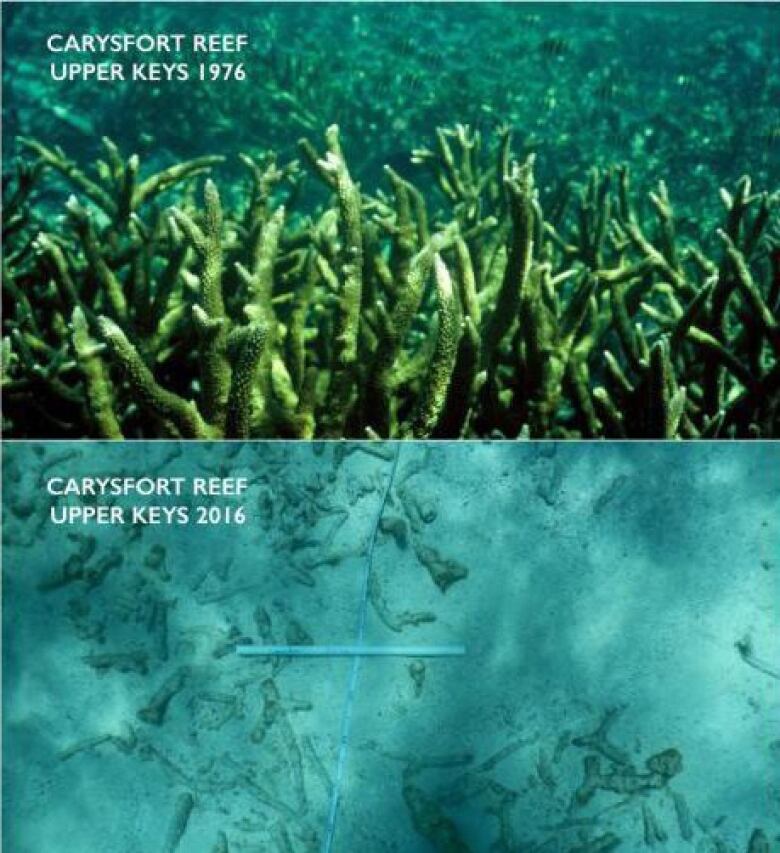FAQs: Worldwide bleaching of coral reefs worries scientists
El Nino combines with global warming to push reefs to possible tipping point
Coral reefs around the world look increasingly threatened, with news this week from Australia that perhaps 35 per cent of the northern and central Great Barrier Reef has been destroyed because of coral bleaching.
Terry Hughes, the lead scientist studying the reefs off Australia's east coast, tweeted that the results are "the saddest, most confronting" of his career.
Between 1950 and 2008, the worldlost about 20 per cent of its coral reefs. This year, the immediate challenge has been the warm ocean temperatures produced by the 2015-16 El Nino, which is now dissipating.
But global warming provides the long-term challenge for coral reefs' survival.
Coral reefs may only cover0.015 per cent of the planet's ocean area, but they account for more than one quarter of the oceans' biodiversity.
- Mass bleaching in Great Barrier Reef kills huge swaths of coral
- The Great Barrier Reef: 5 fascinating things about it
What causes coral bleaching?
Corals that are susceptible to bleaching have a mutually beneficial relationship with the algae that normally live on them.
The algae, zooxanthellae, not only provide the coral with their bright colours, they also provide the coral with food (60-85 per cent of a coral's total nutrition) through photosynthesis. In return, the coral provides the algae with a home, as well as inorganic nutrients.
Sometimes their relationship gets disrupted, most often by persistent above-normal water temperatures. That leads to the coral expelling the zooxanthellae from its tissue.
No longer covered by algae, the white skeleton of the coral becomes visible, hence the term "bleaching."
When is bleaching a problem?
The bleaching does not signify the death of the coral, but if the cause of the bleaching persists as when those warmer temperatures continue then the coral is likely to die.
In 3 months this #coral was dead from mass #bleaching on the #GBR - https://t.co/8JrjWW92su @ProfTerryHughes @jcu pic.twitter.com/lmiWUvUMTB
—@CoralCoEIf the water cools in time, the mutual relationship renews and the reef recovers.
What's especially worrisome is the "mass bleaching" that's underway around the world. Past strong El Ninos also led to mass bleachings, although only three were recorded before 1979.
But the background warming of the oceans caused by climate change makes an El Nino more likely to act as a tipping point.
There are too many variables including the strain of zooxanthellae, the species of coral, the depth, the temperature to provide an overall answer to how long is too long for coral to endure warmer water.
Scientists measure the stress in degree heating weeks. One DHW equals one degree above the long-term average summer maximum temperature for one week. The UN Environment Program says, "Severe bleaching is common when thermal stress exceeds eight DHWs."

Where is bleaching happening?
While nearly all of the Great Barrier Reef is suffering from bleaching, it also is happening in all of the coral reefs of the Lakshadweep Archipelago off the southwestern coast of India.
Bleached reefs in the Indian Ocean stretch from off the coast of Madagascar in Africa to Indonesia, and across the tropical and southern Pacific.
Around Jarvis Island, 2300 km south of Hawaii, bleaching has killed 95 per cent of the coral colonies, NOAA reported June 1.
The Florida Reef Tract, the only barrier reef off the continental U.S., is rapidly disintegrating, due to global warming. Off Florida, acidification from carbon dioxide absorbed from the atmosphere by the oceanis more to blame.
That's causing the reef's limestone framework to "dissolve away," says marine biologist Chris Langdon, author of a study on the reef, published earlier this month.

The Great Barrier Reef may be "experiencing the worst, mass bleaching event in its history," as Hughes' group describes it,but on the other side of Australia, scientists studying the Ningaloo Reef say it hasn't undergone any bleaching. "It's fantastic news, actually," study co-author Chris Thompson told The Australian newspaper.
But bleaching on Australia's west coast tends to occur during a La Nina, which producescolder conditions in the Pacific Ocean, Thompson says. A La Nina is gradually replacing the current El Nino. So, starting later this year, strong ocean currents from Indonesia could push warmer water towardNingaloo.
Do coral reefs recover from bleaching?
It takes years for coral reefs to recover from mass bleaching and they need to avoid another mass bleaching while that recovery is underway.
For example, the Lakshadweep reef recovered from an El Nino-triggered 1998 bleaching, but is only halfway through a mixed recovery following a 2010 bleaching.
Rohan Arthur, the head of the reef program at the Nature Conservation Foundation in India, says, "This makes the present El Nino even more heart-wrenching since it has hit the Lakshadweep before these reefs have had the ability to recover completely from the last catastrophic disturbance." Arthur's interview was posted on the environmental news website, Mongabay, earlier this month.
UNEP reports that "Bleaching events are expected to become more frequent and more severe in the decades ahead."

What can be done?
Some scientists are hopeful that they can buy more time for reefs hit by severe bleaching by re-seeding them with coral growing in cooler, deeper waters.
UNEP executive director Achim Steiner says these "mesophotic reefs are still subject to some of the same effects such as bleaching and habitat destruction but in some locations they may resist the most immediate impacts of climate change."
That doesn't address the acidification issue identified by Langdon.
Hughes, Langdon, Arthur and Steiner all say a reduction in greenhouse gas emissions is critical for the reefs to survive severe bleaching in the decades ahead. Some of the scientists also express a worry that the current mass bleaching may be a tipping point for the reefs.
- Biologists want to make 'super coral' to take on climate change
- ElNinois bleaching Christmas Island corals, saysUVicscientist














_(720p).jpg)


 OFFICIAL HD MUSIC VIDEO.jpg)
.jpg)



























































































